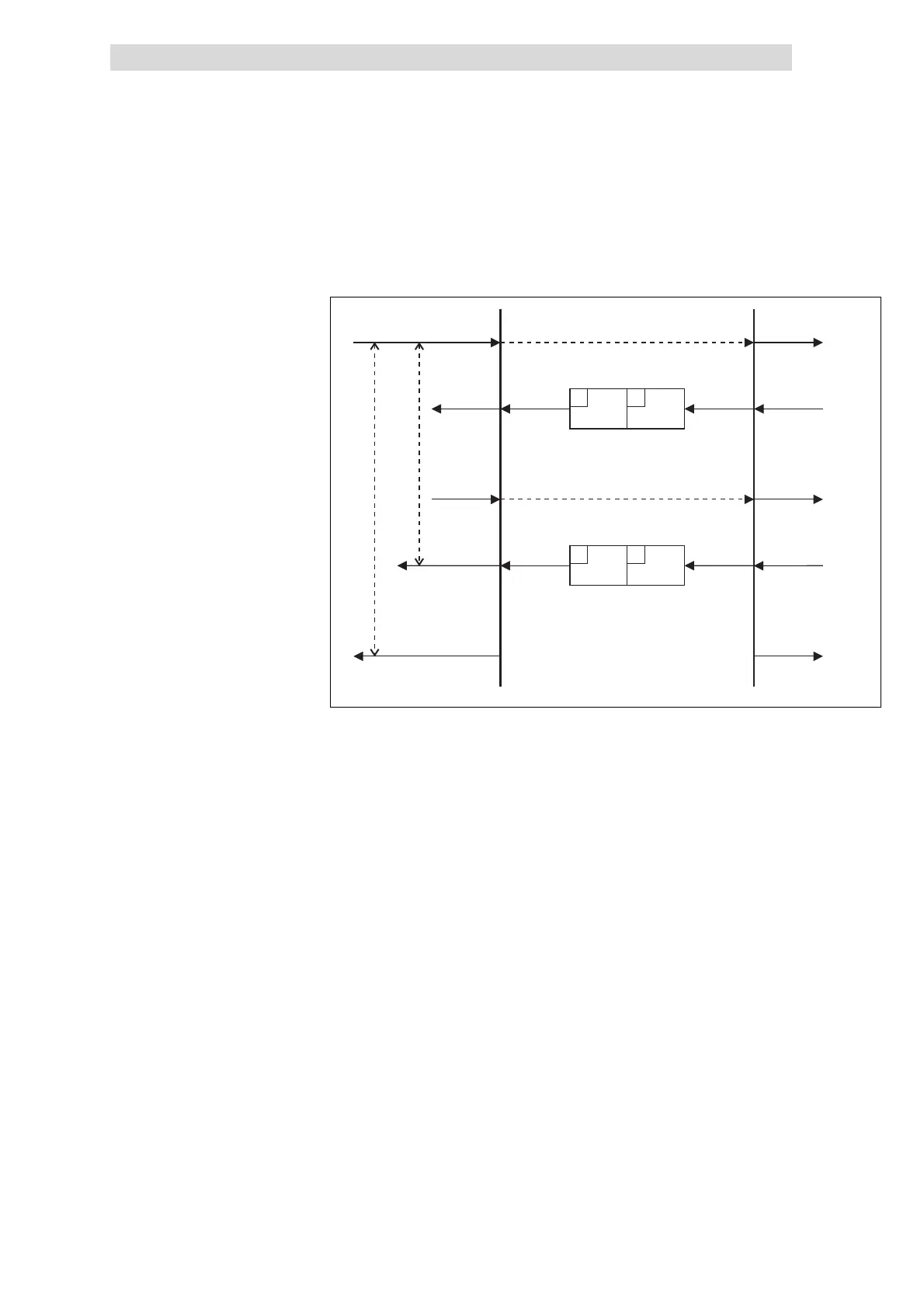Node Guarding
10
Network via CANopen
10.7
l
10.7-1
EDSPM-TXXX-3.0-04/2004
10.7 Node Guarding
COB-ID = 1792 + Node-ID
COB-ID = 1792 + Node-ID
NMT-Slave
1)
NMT-Master
indication
indication
indication
request
request
confirm
confirm
indication
Remote transmit request
Remote transmit request
response
response
Node Guarding Event
2)
Life Guarding Event
2
Node
Guard
time
Node
Time
Life
0
0
1
1
t
s
7
6 … 0
t
s
7
6 … 0
epm-t133
Fig. 10.7-1 Node Guarding Protocol
1)
I/O system IP20
s Status of the I/O system IP20
T Toggle bit
The Node Guarding Protocol monitors the connection between master and slave.
Via the index I100C
h
”Guard time”, a time [ms] can be set and in the index I100D
h
”Life time factor” a factor can be set. If both indices are multiplied by each other,
you get a monitoring time in which the master must send a Node Guarding
telegram to the slave. If one of both indices is set to zero, the monitoring time is
also zero and hence deactivated. The slave sends a telegram with its current status
to the master.
With event-controlled process data transmission, Node Guarding ensures cyclical
node monitoring.
z
The master starts the Node Guarding by sending the Node Guarding
telegram.
z
If the slave (I/O system IP20) does not receive a telegram within the
monitoring time, the Node Guarding Event is activated. The I/O system IP20
switches to the state set in I1029
h
. The outputs switch to a defined state
(also see the chapter Configuration → Diagnostics).
z
A change to the Operational status triggers a reset.
Description

